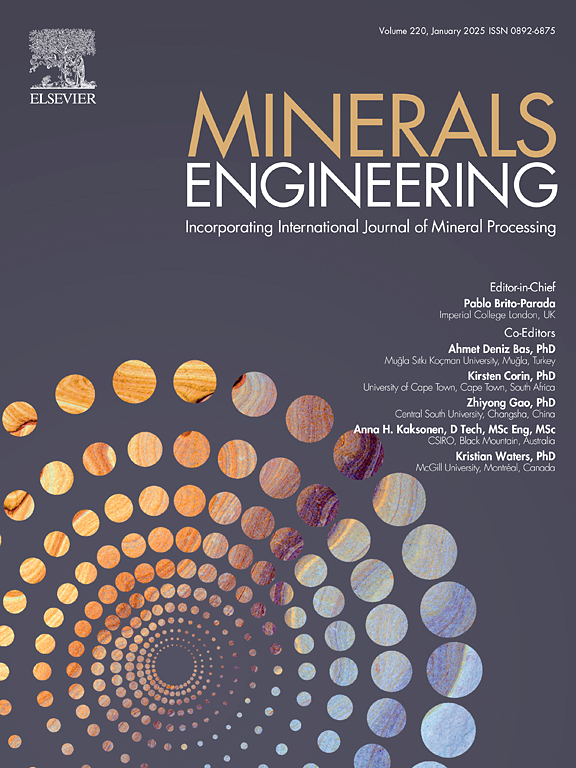Influence of coagulants and flocculants dosing sequence on the dewaterability of oil sands mature fine tailings by pressure filtration
IF 5
2区 工程技术
Q1 ENGINEERING, CHEMICAL
引用次数: 0
Abstract
Rapid and cost-effective dewatering of wet tailings is crucial for clean and sustainable production in mineral processing. In the process of dewatering oil sands mature fine tailings (MFT) through coagulation-flocculation followed by pressure filtration, we observed that the dosing sequence of coagulants and flocculants had a significant influence on dewatering efficiency. Employing two anionic commercial flocculants (SNF3338 or Kemira PAM) together with an inorganic or a natural coagulant (aluminum sulfate, or chitosan), it was found that the sequence of flocculants followed by coagulants (F-C) gave higher net water release during filtration and lower moisture content in filter cakes than those in reverse sequence (C-F). The capillary suction time measurement showed a faster water release rate from the MFT treated with the F-C sequence. Zeta potential measurements indicated that flocs formed by treatment with the F-C sequence had lower negative potential or more positive potentials, likely contributing to the stronger floc strength and improved inter-floc porosity that favored pressure filtration. The findings in this Technical Note could help optimize the chemical treatment regime and reduce chemical consumption in the filtration of fine wet tailings.
压力过滤法混凝剂和絮凝剂投加顺序对油砂成熟细尾矿脱水性的影响
对湿尾矿进行快速、经济有效的脱水对于矿物加工的清洁和可持续生产至关重要。在通过混凝-絮凝法脱水油砂成熟精尾矿(MFT),然后进行压力过滤的过程中,我们观察到混凝剂和絮凝剂的加药顺序对脱水效率有重大影响。在使用两种阴离子商用絮凝剂(SNF3338 或 Kemira PAM)和一种无机或天然混凝剂(硫酸铝或壳聚糖)的情况下,我们发现先使用絮凝剂后使用混凝剂的顺序(F-C)与相反的顺序(C-F)相比,过滤过程中的净水释放量更高,滤饼中的水分含量更低。毛细吸力时间测量结果表明,采用 F-C 顺序处理的 MFT 的释水速度更快。Zeta 电位测量结果表明,经 F-C 顺序处理后形成的絮凝体具有更低的负电位或更高的正电位,这可能有助于增强絮凝体强度和改善絮凝体之间的孔隙度,从而有利于压力过滤。本技术说明中的研究结果有助于优化化学处理机制,减少细湿尾矿过滤过程中的化学品消耗。
本文章由计算机程序翻译,如有差异,请以英文原文为准。
求助全文
约1分钟内获得全文
求助全文
来源期刊

Minerals Engineering
工程技术-工程:化工
CiteScore
8.70
自引率
18.80%
发文量
519
审稿时长
81 days
期刊介绍:
The purpose of the journal is to provide for the rapid publication of topical papers featuring the latest developments in the allied fields of mineral processing and extractive metallurgy. Its wide ranging coverage of research and practical (operating) topics includes physical separation methods, such as comminution, flotation concentration and dewatering, chemical methods such as bio-, hydro-, and electro-metallurgy, analytical techniques, process control, simulation and instrumentation, and mineralogical aspects of processing. Environmental issues, particularly those pertaining to sustainable development, will also be strongly covered.
 求助内容:
求助内容: 应助结果提醒方式:
应助结果提醒方式:


